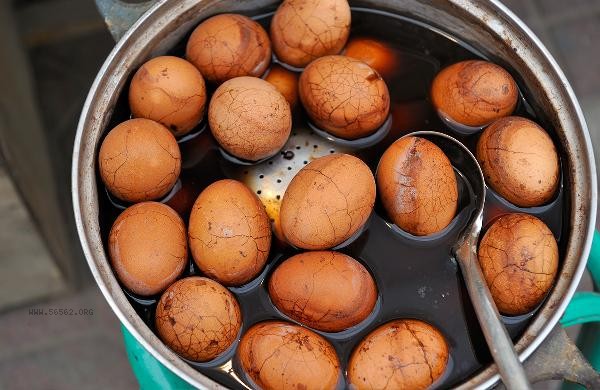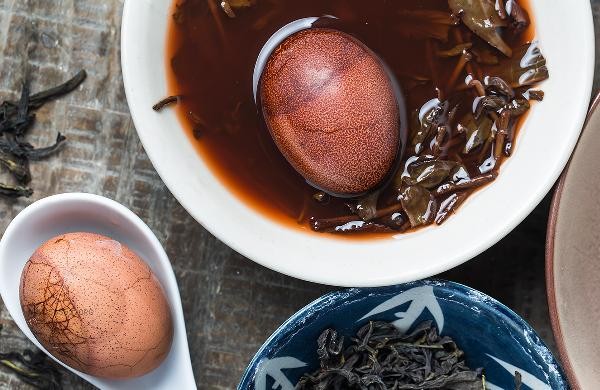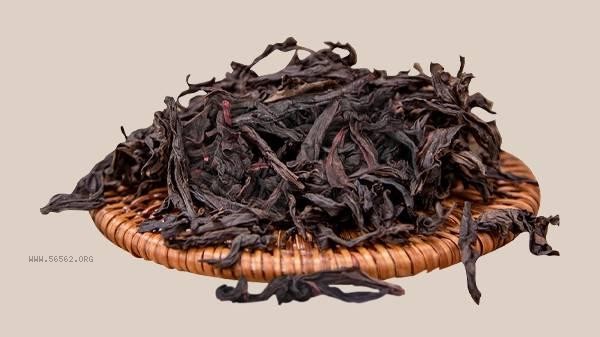The key to authentic cooking of Tea egg lies in the ratio of tea and spices, the control of heat and the soaking time. There are five key points to consider: tea selection, spice pairing, cooking heat, shelling techniques, and soaking time.

1. Tea Selection
Black tea is the first choice for boiling Tea egg. Its high degree of fermentation and mild tea nature will not lead to excessive hardening of egg white. It is recommended to use fully fermented teas such as Zhengshan Xiaozhong or Dianhong. The tea soup has a bright red color and contains theaflavins, which can form amber colored patterns. Green tea is not suitable as the main ingredient due to its high content of tea polyphenols, which can cause the egg white to become astringent, and the strong aroma of oolong tea may mask the spice flavor. If you pursue a special flavor, you can pair it with a small amount of ripe Pu erh tea to increase its richness.
2. Spice pairing
Basic spices should include star anise, cinnamon, and fragrant leaves, with a ratio of 2:1:1 being optimal. Octagonal provides a sweet fragrance tone, cinnamon adds a sweet aftertaste, and fragrant leaves balance the greasy feeling. Advanced formulas can add a small amount of fennel and cloves, but the amount of cloves should be controlled at 1-2 to avoid bitterness. Spices need to be boiled in cold water to stimulate their aroma, and then pre boiled eggs should be added to avoid direct high temperature causing the spices to evaporate too quickly.
3. Cooking Temperature
Eggs should be boiled in cold water over low heat to prevent bursting from sudden heat. After boiling, turn to medium heat and cook for 8 minutes to reach a soft and tender state. When fully cooked, it should be extended to 12 minutes. Tea and spices should be added to the egg after it has set, and simmered at 85-90 ℃ for 20 minutes. Avoid boiling over high heat throughout the process, as it can cause the protein to harden and the tea soup to become cloudy. Using a clay pot or enamel pot can better maintain a constant temperature.

4. Knocking Techniques
After removing a boiled egg, immediately supercool it and gently tap it with a spoon until a spiderweb like crack appears on the shell surface. The optimal distance between cracks is about 3 millimeters, as being too dense can cause the eggshell to fall off, while being too sparse can affect its flavor. When tapping, avoid the rounder end of the egg in the air chamber to prevent protein overflow. The depth of cracks is measured by touching the membrane layer, which can form patterns while maintaining the integrity of the egg.
5. Soaking Time
After hatching, the eggs should be placed back in the tea soup and soaked in cold storage overnight for at least 8 hours before they can fully taste. The tea soup should completely cover the egg body, and the surface can be pressed with heavy objects to ensure even penetration. If you want to speed up the process, you can flip it every 2 hours, but the flavor is not as mellow as low-temperature slow soaking. After soaking for 24 hours, the taste reaches its peak. It is recommended to consume it within 3 days as prolonged soaking can turn the protein into wood.

When the boiled Tea egg are refrigerated, it is recommended to keep some of the original soup to prevent air drying. Warm or cold food can be served before eating, and white porridge can balance the salty flavor. Pregnant women and those with excessive stomach acid should control their consumption and avoid consuming too much tannic acid at once. The remaining tea soup can be reused 1-2 times after filtration, with new tea leaves and seasonings added each time. When choosing fresh eggs, those that shake silently and have a smaller air chamber are fresher, and they are less likely to turn yellow when cooked. If you like spicy flavors, you can add dried chili or Sichuan peppercorns to spices, but be aware that capsaicin may irritate the gastrointestinal mucosa.








Comments (0)
Leave a Comment
No comments yet
Be the first to share your thoughts!